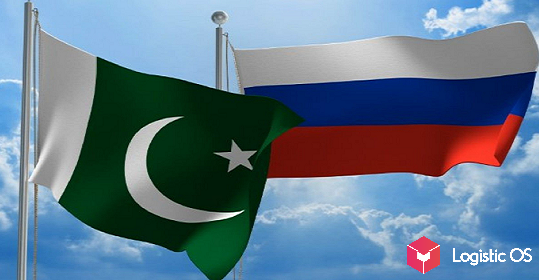On the eve of the end of the current agricultural year, experts expressed their assumptions on the situation with grain exports in Russia.
In April 2020, for the first time in 10 years, Russia introduced an export quota for the most important grain crops, including wheat, outside the countries of the Eurasian Economic Union.
First of all, this measure was introduced to stabilize prices on the domestic market of Russia: due to a sharp devaluation of the ruble, according to the Sovecon report, the average price of wheat in the last week of March increased by a thousand rubles to 13.3 thousand rubles per ton . Oil at that time was cheaper.
By April 22, 2020, the price updated its highs, reaching 14.5 thousand rubles per ton.
Domestic consumers have to pay more for flour, which rises in price after grain. And it is more profitable for exporters to sell it abroad, so they either refuse to supply grain to mills, or set an extremely high price for it, since bakeries do not accept flour at an overpriced price, representatives of the Russian Union of Flour and Grain Enterprises note in a letter to Minister of Agriculture Dmitry Patrushev.
So far, flour prices have kept government regulation and falling demand amid the coronovirus pandemic among pizza, frozen and fast food producers.
In addition, sales from the intervention fund were carried out, the stock of which amounted to 1.7 million tons (1.4 million tons were sold).
The Ministry of Agriculture sets marginal prices for grain for each region. The United Grain Company (OZK) buys grain from producers when the price drops, and when it exceeds the maximum, it sells it.
For example, in the Southern Federal District, where the majority of regions producing grain are concentrated, purchasing interventions will be carried out when the price of wheat of the third grade drops to a minimum of 7.4 thousand rubles per ton (including VAT), and commodity interventions — with a maximum of 9 , 7 thousand rubles per ton (including VAT).
Also, Russia, like many other countries, such as Vietnam, China, India, limits the volume of food exports to avoid problems with self-sufficiency.
Although, according to experts, with domestic grain consumption of 70 million tons and a planned harvest of 125.3 million tons, restrictions on the export of grain in Russia are not required.

What are the forecasts for the next 2020-2021 agricultural year?
According to the director of the Institute for Agricultural Market Studies (IKAR) Dmitry Rylko, the projected production volume is 76-77 million tons. Of course, much will depend on weather conditions, but the trend for continued growth of wheat sown areas in Russia continues.
Grain export in 2020-2021 for agricultural year will preliminary amount to 45 million tons, including wheat — 34.5 -36 million tons.
The forecasted production level is determined by weather conditions — in the south of Russia all spring passed without rain and the summer is promised to be arid. But at the same time, the drop in indicators in the Southern region is offset by a record increase in yield in the center of Russia, the Volga Region and the Siberian Federal District.
This year, Russia was not able to update the export record, D. Rylko said, but at the same time remains the world leader in grain exports.
According to Korbut, grain exports in the current agricultural year amounted to about 43.5-44 million tons, of which 35-35.3 million tons fell to wheat.
It is typical that in May 2020, the volume of exports was almost equal to the figures for the same period in 2019, and in June there was a drop to 600 thousand tons against 1.6 thousand tons in 2019.
In any case, Russia is entering the season with good indicators, says Igor Pavensky, head of the Rusagrotrans analytical center: grain prices are higher than a year ago, while, most likely, Russian competitors in the external market will reduce production: the EU — by 12-12 million tons, Ukraine by 3.4 million tons.
But, according to the director of Sovecon, Andrei Sizov, pricing is not the most important thing that exporters should care about: some of them, in his opinion, will not withstand the losses incurred and curtail their activities.
In addition, the Ministry of Agriculture plans to continue to use quotas, so it is expected that the first half of the agricultural year will be as active as possible in anticipation of restrictions.
Next season, producers, according to Korbut, will have to «fight» for buyers: production will increase compared to last season, and the threatening global decline in GDP, which was significantly affected by the virus, will lead to an inevitable drop in income and solvency.

